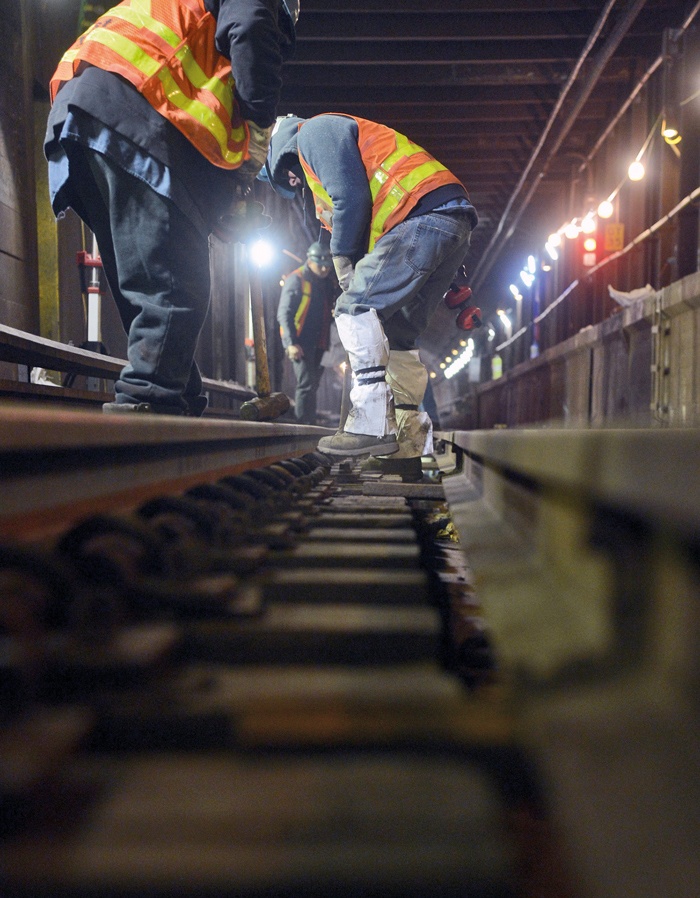Photo Courtesy of Marc Hermann/MTA NYC Transit
The Subway Action Plan implemented a number of initiatives to stabilize the subway system.
By Michael V. Cusenza
The Metropolitan Transportation Authority on Thursday released the final after-action report for the $836 million Subway Action Plan.
The SAP implemented a number of initiatives to stabilize the subway system, which was suffering from a troubling number of disruptive incidents that had a clear impact on customers. Governor Andrew Cuomo declared a State of Emergency, clearing the path for accelerated emergency measures to immediately arrest further decline of subway service and reliability. According to the MTA, Phase One of SAP sought to stabilize the system, while Phase Two focused on developing and institutionalizing the successes from Phase One work to establish a long-term focus on the system modernization, improvements, and sustain SAP progress.
The SAP initiatives include power disruption mitigation programs in collaboration with the State Public Service Commission and Con Edison; accelerated fleet maintenance and inspections; accelerated installation of Continuous Welded Rail and rail grinding; whole-network cleaning of underground tracks; deep station cleaning; unprecedented full system inspection of all signals and proactive repairs; widespread water mitigation efforts such as grouting, leak repairs, street grate clearing and drain cleaning; faster incident response times; and an intense focus on elevator and escalator maintenance that prioritizes proactive repairs. According to the agency, these initiatives worked concurrently with NYC Transit campaigns such as a back-to-basic approach to service management and Save Safe Seconds efforts to increase speeds, which included the Subway Performance Evaluation, Education and Development unit to identify and fix miscalibrated signal timers, encouraging employees to look for opportunities to improve service, and the Group Station Manager program.
In other recent MTA news, New York City Transit President Andy Byford abruptly resigned Thursday.
“Andy was instrumental in moving the system forward, enacting the successful Subway Action Plan and securing record capital funding with the governor and the Legislature, and we wish him well in his next chapter,” said MTA Chairman & CEO Pat Foye.
Byford took the job in 2018 at a particularly fraught time for the agency and city public transit. He hit the ground running, unveiling his Fast Forward plan to revolutionize every major aspect of the MTA and its services, from subways to buses to accessibility to corporate culture, in the first few weeks at the helm. The 75-page blueprint focused on four major priorities: transforming the subway, reimagining the city’s public bus network, improving accessibility for all modes, and engaging and empowering NYC Transit’s workforce to deliver the best service possible.
“Subway and bus riders are grateful to Andy Byford for his historic service at New York City Transit. In two years, Andy made subways faster and more reliable, he tackled longstanding challenges to improving bus service, and he crafted the first plan in a generation that would truly modernize the transit system,” said Riders Alliance Executive Director John Raskin. “No matter who runs the transit system day-to-day, ultimately Gov. Cuomo is in charge of the MTA, and riders will be holding the governor accountable for the quality of our transit service. With whatever management team he puts in place, the governor is on the hook for making subways faster and more reliable, rescuing buses from years of decline, and delivering on a $51 billion capital program to fix public transit for the long term.”

